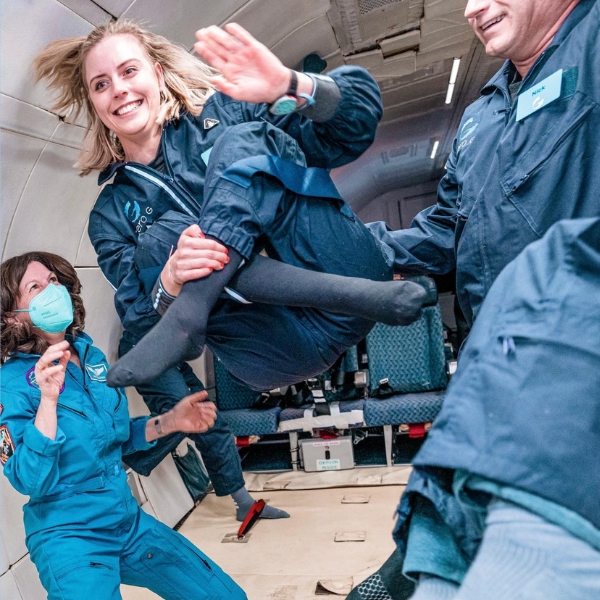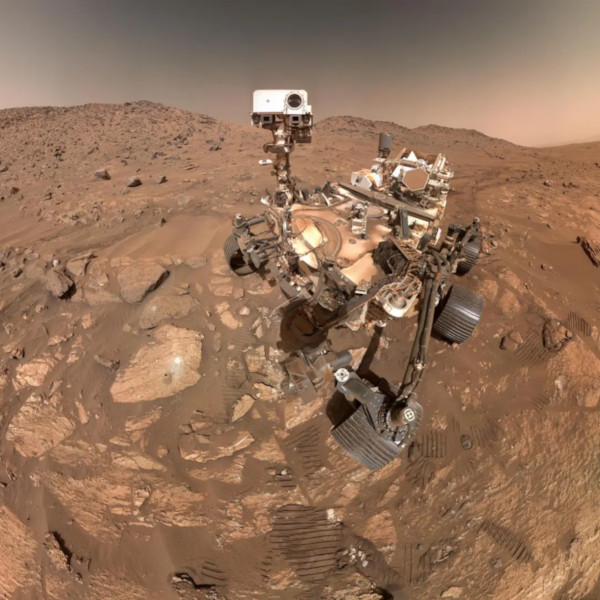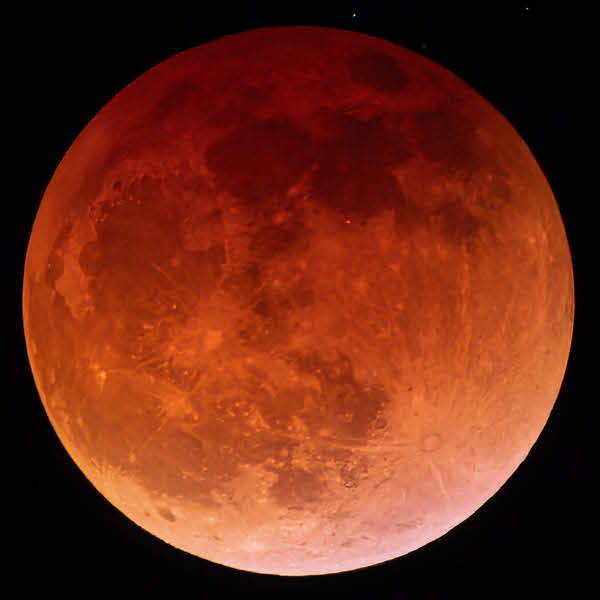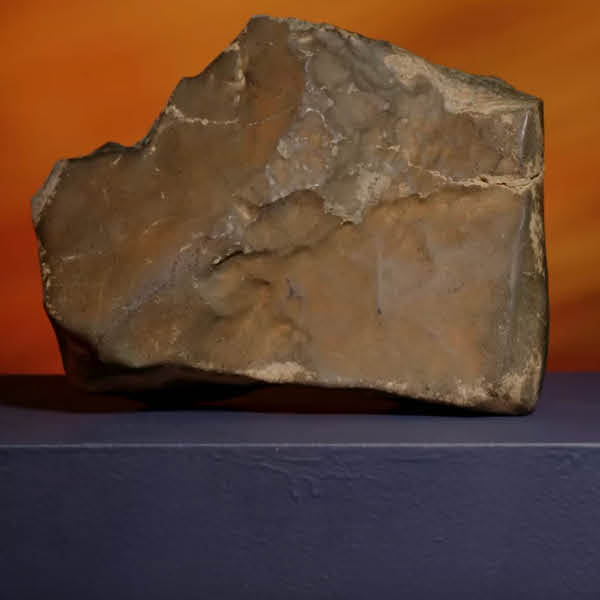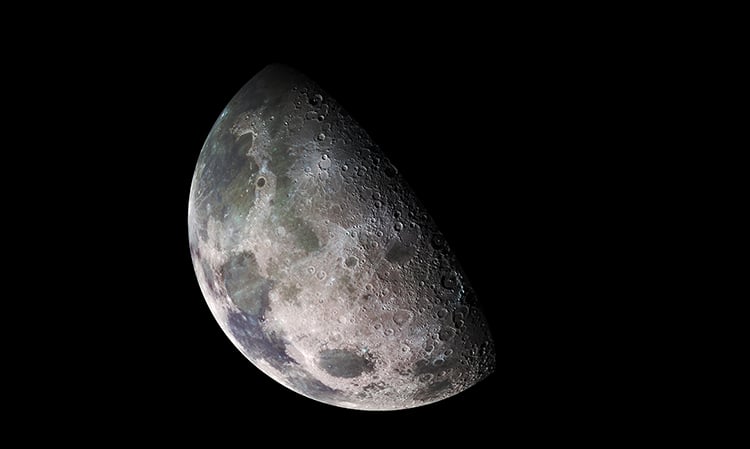
Photo:NASA/Goddard/ASU
As beautiful as the Moon is, its surface is not especially hospitable to humans. Temperatures at the equator range from 250°F (121°C) during the day to -208°F (-133°C) after dark. Add in micrometeorites and high levels of radiation and it seems unlikely that astronauts will ever spend extended periods of time on the Moon’s surface. However, according to a new study published in Nature, the first confirmed lunar cave has been identified and could eventually be a base camp for astronauts on long-term missions.
Scientists have been theorizing about lunar caves for at least 50 years. In 2009, NASA's Lunar Reconnaissance Orbiter (LRO) launched in order to make a 3D map of the Moon. It gathered evidence in 2010 of very deep pits, including one on the Sea of Tranquility, near where Apollo 11 landed in 1969.
The radar imaging of this 300-foot-wide pit has now been reanalyzed using new signal processing techniques. As a result, University of Trento scientists Lorenzo Bruzzone and Leonardo Carrer determined the pit is indeed an opening to a cave that is as long as 14 tennis courts and 130 feet wide.

Photo: NASA/GSFC/Arizona State University
Despite its promising structure, getting in and out of the cave might be tricky. It's nearly a completely vertical slope down, and it's 410 feet below the surface on the west side. On the east side, it's even deeper at 443 feet. As Arizona State University's School of Earth and Space Exploration researcher Robert Wagner explained to The Guardian, “Getting into that pit requires descending 125 meters before you reach the floor, and the rim is a steep slope of loose debris where any movement will send little avalanches down on to anyone below. It’s certainly possible to get in and out, but it will take a significant amount of infrastructure.”
Scientists are hoping this is just the first of many caves to be discovered as the LRO has already identified over 200 lunar pits. The confirmed lunar cave, along with other pits, are thought to be the result of lava tubes formed from volcanic activity that occurred billions of year ago. Not only could caves be vital to future long-term missions in terms of shelter, they may also contain ice and be a source of water. Study author Carrer notes, “After all, life on Earth began in caves, so it makes sense that humans could live inside them on the Moon.”
The research implications of having access to lunar caves would also be wide-reaching. The geological record from inside the caves will provide billions of years of information. This data would aide researchers in understanding both volcanoes and the formation of the Moon.
“It’s really exciting,” Carrer says. “When you make these discoveries and you look at these images, you realize you’re the first person in the history of humanity to see it.”
While lunar caves have been theorized about for half a century, researchers have recently confirmed the existence of one on the Sea of Tranquility.
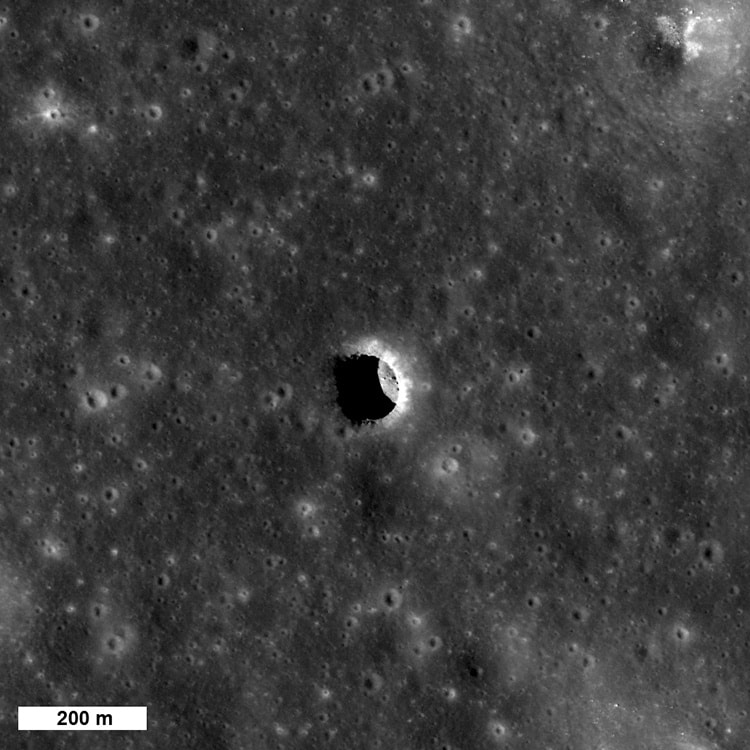
One of many large pit craters so far found on the Moon — do these pits provide access to open lava tubes? Image is 1170 meters wide. (Photo:NASA/GSFC/Arizona State University)
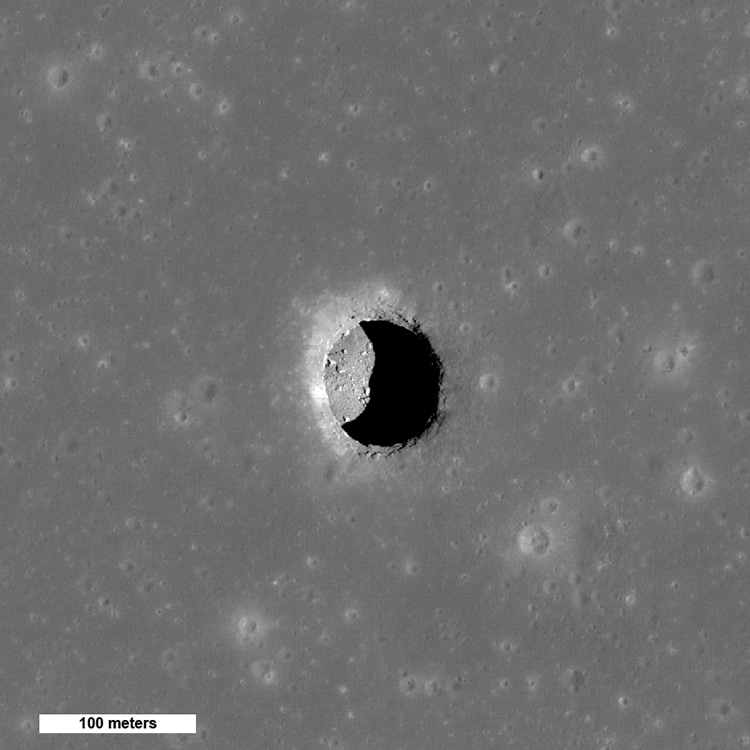
This is a spectacular high-Sun view of the Mare Tranquillitatis pit crater revealing boulders on an otherwise smooth floor. This image from LRO’s Narrow Angle Camera is 400 meters (1,312 feet) wide, north is up.
(Photo: NASA/Goddard/Arizona State University)
The lunar cave is thought to be a lava tube cave that is the result of volcanic activity billions of years ago.
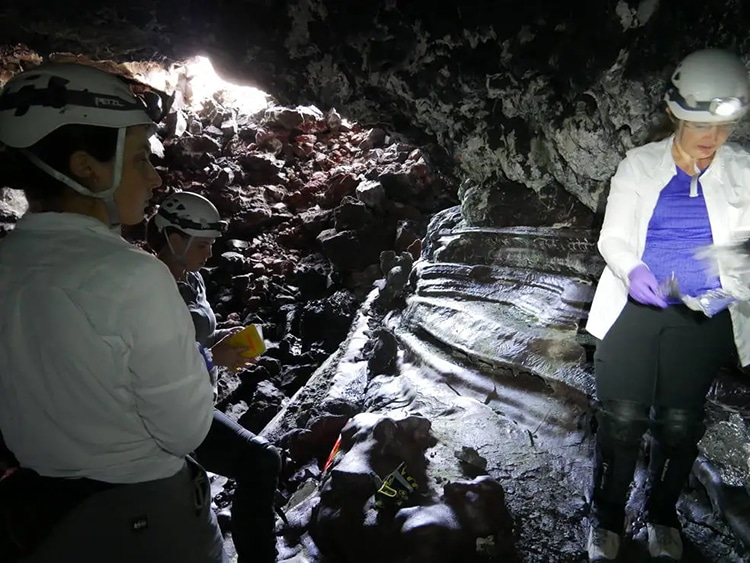
This image was taken in August 2019 inside a lava tube near Hawaii’s Mauna Loa volcano, where scientists had come to study the microbes and minerals that could reveal insights about similar extra-terrestial environments. (Photo:NASA/Goddard)
h/t: [Smithsonian Magazine]
All images via NASA.
Related Articles:
Giant “Scar” on Mars Longer Than the Grand Canyon Spotted in New Satellite Image
Two Meteor Showers Will Peak on the Same Night in the Same Region This Month
NASA Space Telescope Discovers Its First Starless Rogue Planet
Jupiter’s Most Stunning Images Captured by NASA’s JunoCam in Sharp Detail











































































